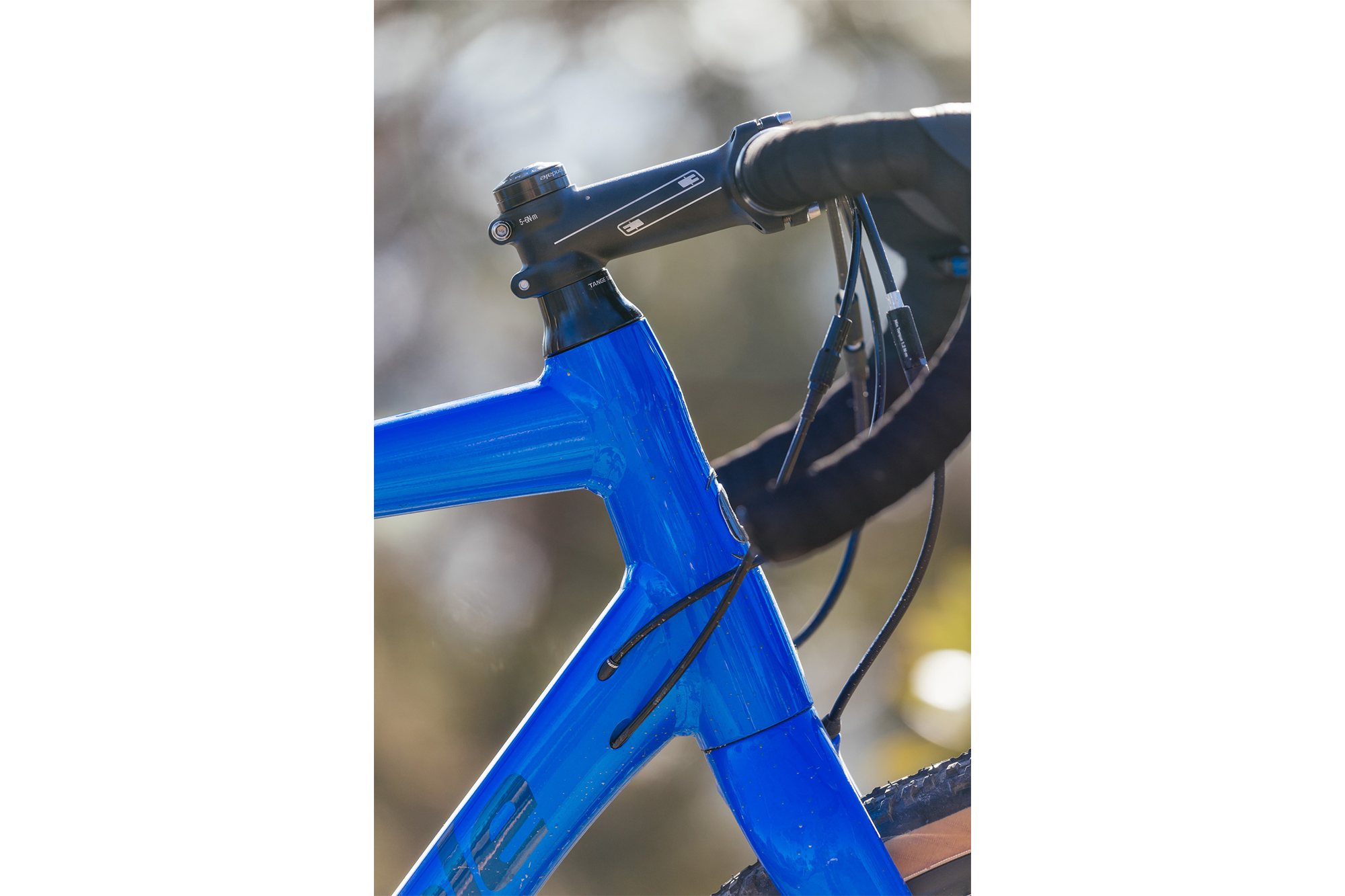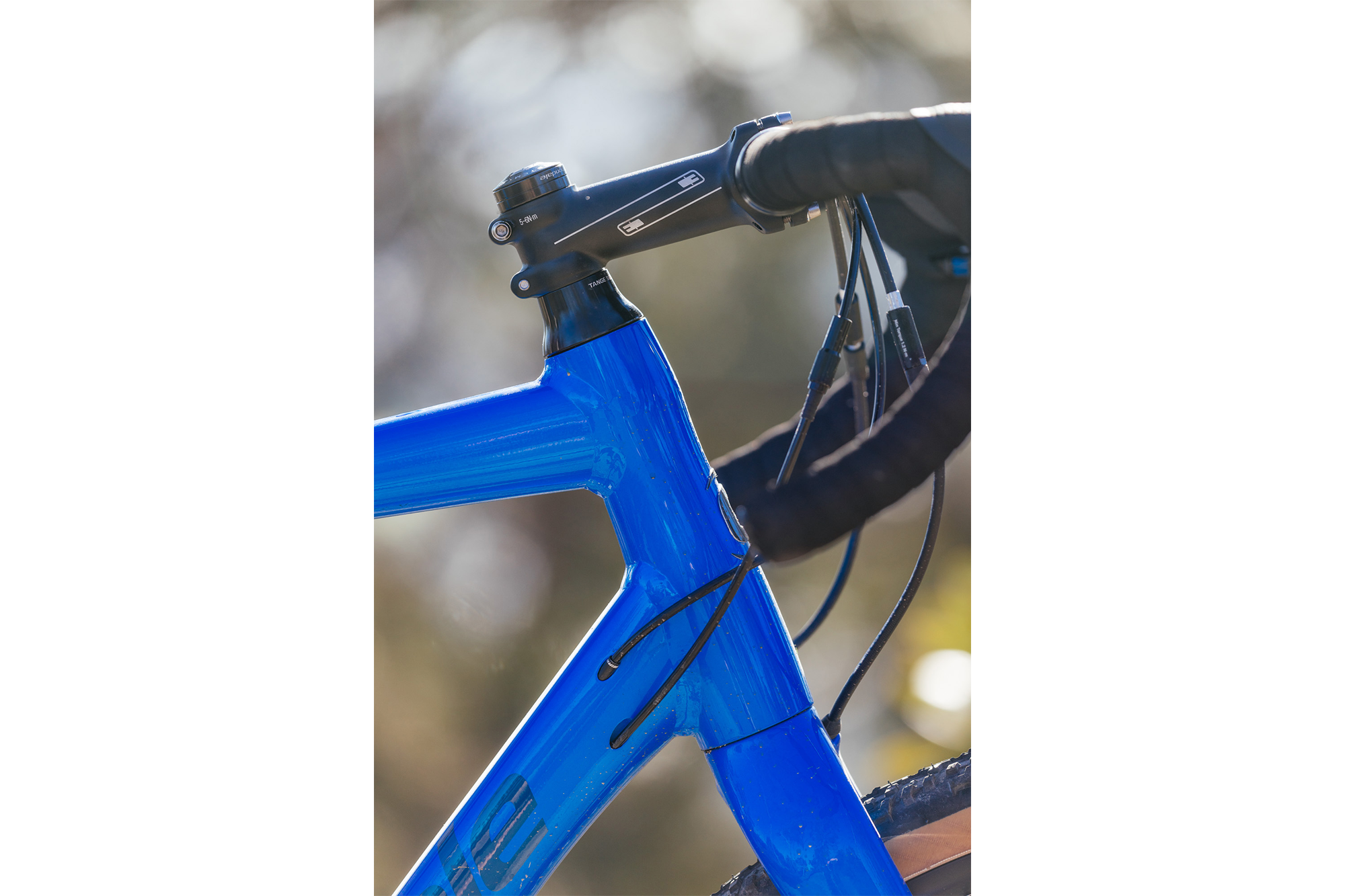A few years ago, the disparity between road bikes, disc road bikes, and all-road bikes was very high. It was hard to find a disc road bike or all-road that had hydraulic brakes, clearance for 42mm tires, and extra bottle bosses for under $3,000. In the last year, the amount of all-road models on the market has increased drastically, which is great for the consumer! Bigger brands who typically address racing have looked to expand into all-road, gravel, and adventure platforms. Even Cannondale has thrown their hat in the ring with the affordable Topstone. I can’t help but think about how a bike like this would have blown the market apart a few years ago but how does it stack up against the already hefty list of options out there?

Affordability
With bikes breaching the $10,000 mark in Cannondale’s catalog, suddenly a $2,100 complete with a SRAM Apex 1 kit and hydro brakes look affordable. Yet within that pricepoint, many brands have similar bikes, made from either aluminum or steel. The trippy part is, typically the $2,100 option is the lowest end model, with a mix of parts. The Topstone turns that upside down with the $2,100 model being the highest end under the name, with a complete SRAM Apex 1 kit, and includes a dropper post. The lowest end Topstone comes in at $1,050 with a Sora kit. In between is a Topstone 105 kit for $1,750. I had reverse sticker shock when I saw these prices and after I rode the Topstone for a few weeks, I was in even more shock!

Identity Crisis
Don’t take this is a necessarily negative thing but the Topstone is in the midst of an identity crisis. Typically, when a bike is marketed as an adventure or gravel bike, it will clear a large tire size. Large, by today’s standards, usually falls around 45mm for 700c wheels or 47mm for 650b. The Topstone has clearance for 42mm tires. In my opinion, this one detail made me scratch my head a bit. With an aluminum frame, would a 42mm tire soften the ride enough? Also, why does Cannondale call a 42mm a “high volume” tire? In 2012 or 2013, this would for sure be the case, but in 2019, high volume usually denotes a tire in the mid to upper 40’s, not the lowest end.
That said, the Topstone does have extra bottle bosses, rack mounts, fender mounts. You name it! With a geometry that’s tuned for off-road riding, with a head angle of 71º, a seat angle of 73.1º, 6.5 trail, and a bottom bracket drop of 7.5, it looks good on paper too. The geometry numbers are there, resulting in a snappy and responsive feel. That combined with the 40mm WTB Nanos provided a ride quality where if I turned off my preconceived notions of what “high volume” means, I barely noticed the frame material or the seemingly small rubber.
On paper, the Topstone can be a head-scratcher, but the ride quality quickly proves that yes, a 40mm tire really is enough for dirt road riding. If you want to push its capabilities, even more, there’s a dropper post.

Dropper like it Hot
Last week, I was hanging out in a bike shop, where the mechanic was building a popular company’s disc road bike, setting up the dropper post. It took him all afternoon to get it set up, since the setup specs weren’t consistent, and other parts of the system weren’t working as delivered. This happens, but after a day’s worth of work, he hit the dropper lever to see the saddle drop a measly 2cm. We both laughed and lamented the attempt by this company to make a “rowdy road bike.”
So when I showed him the Topstone, I expected a cynical comment. Yet with its +/-2.5″ of dropper travel, the Topstone’s post makes more sense, when compared. I’ve seen a number of dropper posts on stock bikes, but the Topstone’s dropper is hardly an attempt, it’s one of the best integrations I’ve seen and it’s so simple. With a cable lever mounted below the left brake lever, it takes a bit to get used to, but functions without error. It just takes a bit to get used to the presence of something in that space under the brake lever.

+/-2.5″ isn’t a lot of travel for a dropper post, if it were a mountain bike, but on a road bike, that puts the saddle just enough out of the way to help with steep and technical descents. Plus, remember, this a $2,100 bike, so getting an added bonus like a dropper is a hat tip in the right direction. Still, it does feel a little weird to have a dropper on a bike with a 40mm tire.

Ride Quality
While I’ve only ridden this bike on mixed terrain road rides, the Topstone clearly has capabilities for lightweight tours or bikepacking trips. In the past, I’ve been turned off to aluminum as a frame material, but modern aluminum, with the right tire combo, results in a pleasant ride. To be honest, I tried to force myself to feel the chatter of aluminum, on washboard descents and was pleasantly surprised at the ride quality. The tires weren’t even set up tubeless! Now, this isn’t a steel versus aluminum issue, because most production steel bikes are over-engineered to pass safety standards. This results in heavy tubing that rides completely differently than a handmade steel frame, using lighter-weight tubing.

Production steel and handmade steel are two different ride qualities and you can’t get handmade lightweight steel for this price point. In my experience with the Topstone or other production steel bikes, I really can’t tell the difference, until you pick it up. The Topstone weighs around 23lbs for the size large I reviewed, with the dropper and it rides like a 23lb bike. It has a carbon fork and alloy components. Other than the fork, there isn’t a lick of carbon componentry on it. You could easily shave even more weight off it with carbon wheels and a carbon cockpit or cranks. That’s impressive and puts this bike up a few notches in the desirability category. Honestly, the Topstone performed as well as other bikes I’ve ridden in this realm, carbon, steel, whatever.

Take Away
When you compare the Topstone on paper to competitor’s offerings, it looks a little under-equipped with its 42mm tire clearance. Most all-road bikes fit a 45mm tire and in aluminum, it would be easy to max out the clearance a little more. For what you get however, the Topstone is a great value. If you’re a roadie who wants to dip their toes in dirt a bit, the Topstone provides a familiar ride, in an affordable platform. Or if you’re a mountain biker, looking to get into gravel riding, the dropper post will add a familiar feel on descents. With build options ranging from $1,050 to $2,100, the Topstone hits a variety of budgets, on a capable platform that rides like a rocket and won’t break your back on a hike a bike.
See more information on the Topstone and its available build kits at Cannondale.
____
Follow Cannondale on Instagram













































































